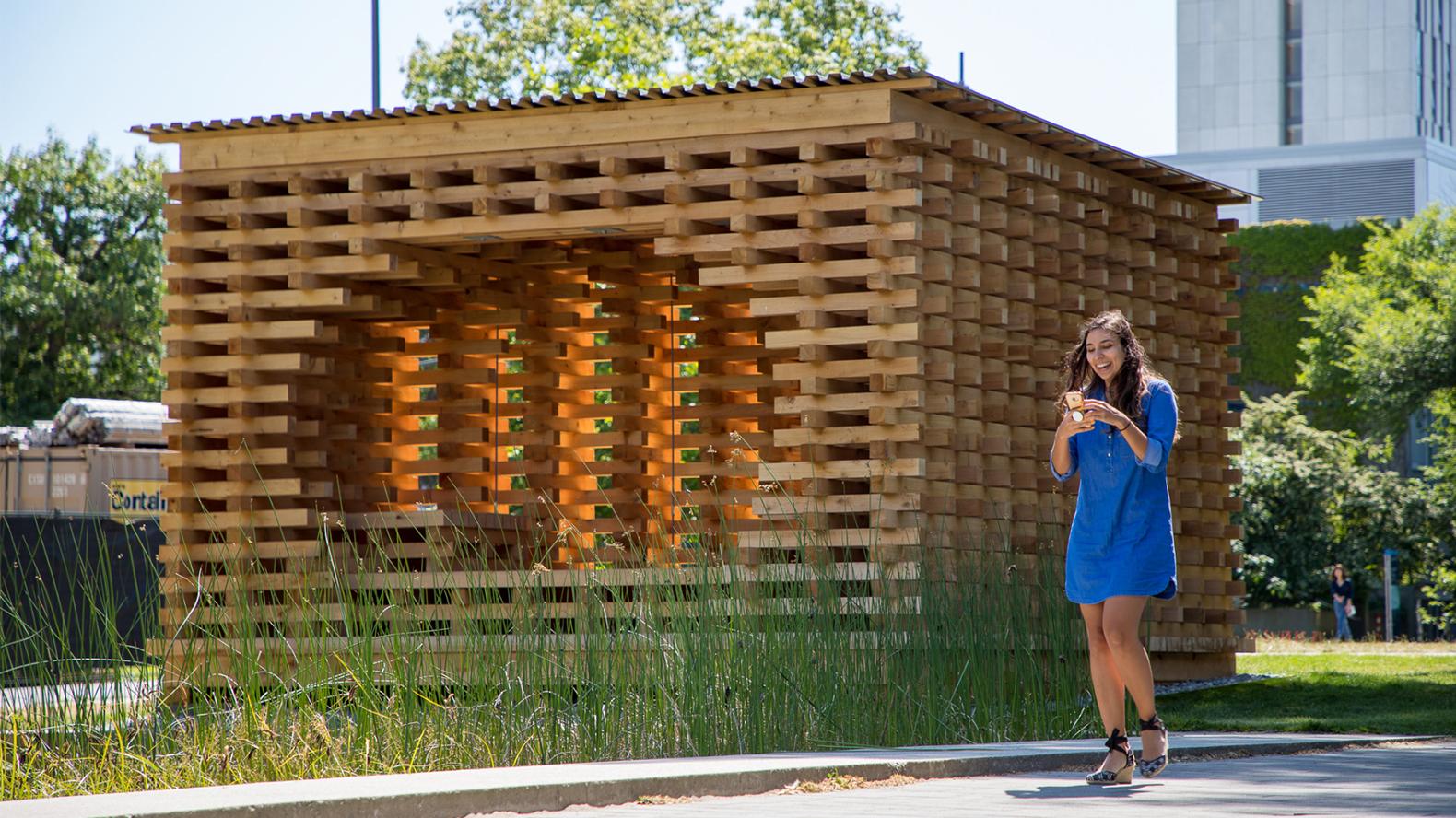
This article by Kevin Jiang originally appeared in the The Ubyssey on 19 June 2019.
C-Shore, an airy pavilion of red cedar situated before the Martha Piper fountain, has finally finished construction.
C-Shore’s construction was overseen from start to finish by students enrolled in a two-term design-build course from UBC’s School of Architecture and Landscape Architecture (SALA). The project was conducted in collaboration with the UBC SEEDS Sustainability Program.
SEEDS meets with community partners to identify “priorities around advancing sustainability,” explained SEEDS Program and Policy Planner [of] Community Development, David Gill. Based on this information, they then coordinate collaborations between students, faculty and community groups on sustainability initiatives.
According to Gill, the planning process for C-Shore began early last summer when Joseph Dahmen, an associate professor at SALA, approached SEEDS with the concept. Through the following months, SEEDS collaborated with groups including Department of Geography faculty, UBC Campus and Community Planning, UBC Properties Trust and others to determine the building site and goals of the project. Dahmen’s students began designing C-Shore during the fall, and construction started in early May.
The pavilion itself might be mistaken for a massive Jenga tower, with its walls of interwoven wood planks. The surrounding air is suffused with the smell of drying red cedar, and over the coming year, UBC Geography students plan to collaborate with sound artist Kristen Roos to produce a soundscape of the forest where the pavilion’s timbers were harvested.
According to Dahmen, the wood used in the pavilion was sourced locally from western red cedar trees growing on a construction site near Wesbrook Village. This choice of wood is fitting, Dahmen explained, as one of the project’s goals is to source building materials from local ecologies.
“Western red cedar is a tree that's native to the Pacific Northwest, it grows all around campus, and it has a symbolic significance in First Nations architecture,” he said.
“We wanted to make sure that there's an opportunity for the community to really enjoy [the pavilion]..." Zubair Hirji
The pavilion will remain on campus for two years, after which time it will be disassembled. The wood will then be provided to the Vancouver School Board for use in building planter boxes at local elementary schools.
“We wanted to make sure that there's an opportunity for the community to really enjoy [the pavilion]... But we’re also seeing this as a kind of pilot project to help inform what future design builds might look like,” said Gill, stressing that the structure was never meant to last.
“Most architects don't actually get directly involved with the building process,” said Dahmen, explaining that while architects design structures, the construction process often gets outsourced to contractors. He believes the project, which required students to oversee the entire process from design to construction, provided “invaluable training.”
Three of Dahmen’s students, Sarah Klym, Christopher Walker and Hussam Zbeeb, agreed that their involvement with the project was a valuable experience.
According to Klym, the project was a “really pleasant introduction to working on a [construction site] and learning how a site works.”
Walker said he found the most instructive part of the process to be interacting with stakeholders such as UBC SEEDS and Campus and Community Planning, as well as members of the broader community. “[Seeing] many people stopping and taking interest in [C-Shore],” he continued, was a “real eye-opener.”
Zbeeb added that building C-Shore was a “pretty big eye-opener” to students without construction experience.
“As an architecture student, it’s easy to draw lines on a paper… but to actually be in the process yourself adds a whole level of understanding and complexity.”
— With files from Vicky Huang.